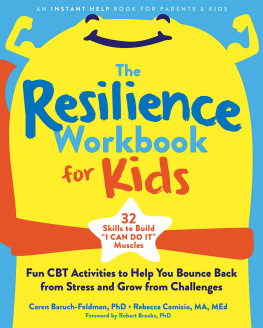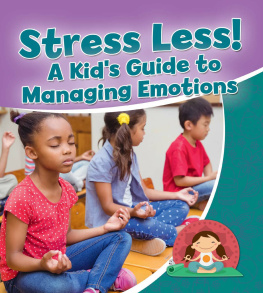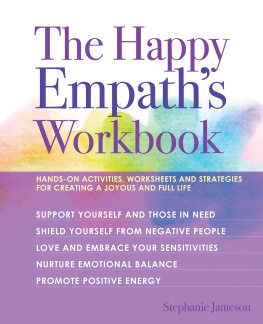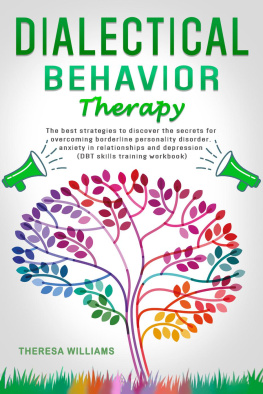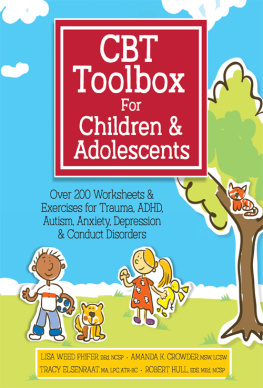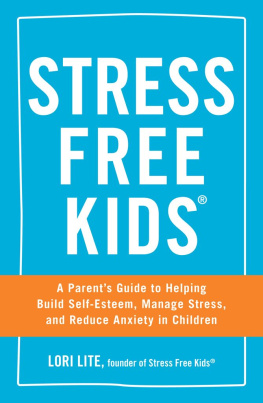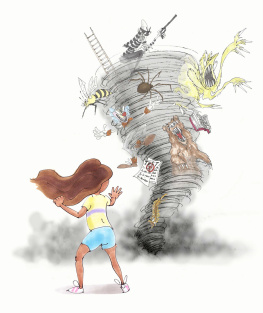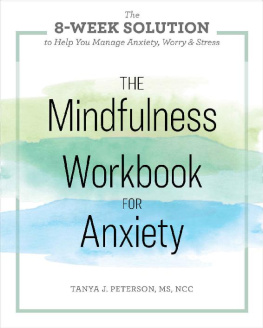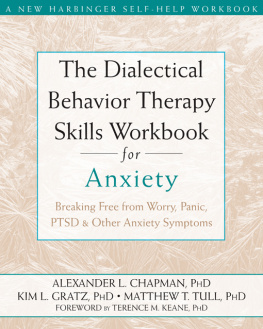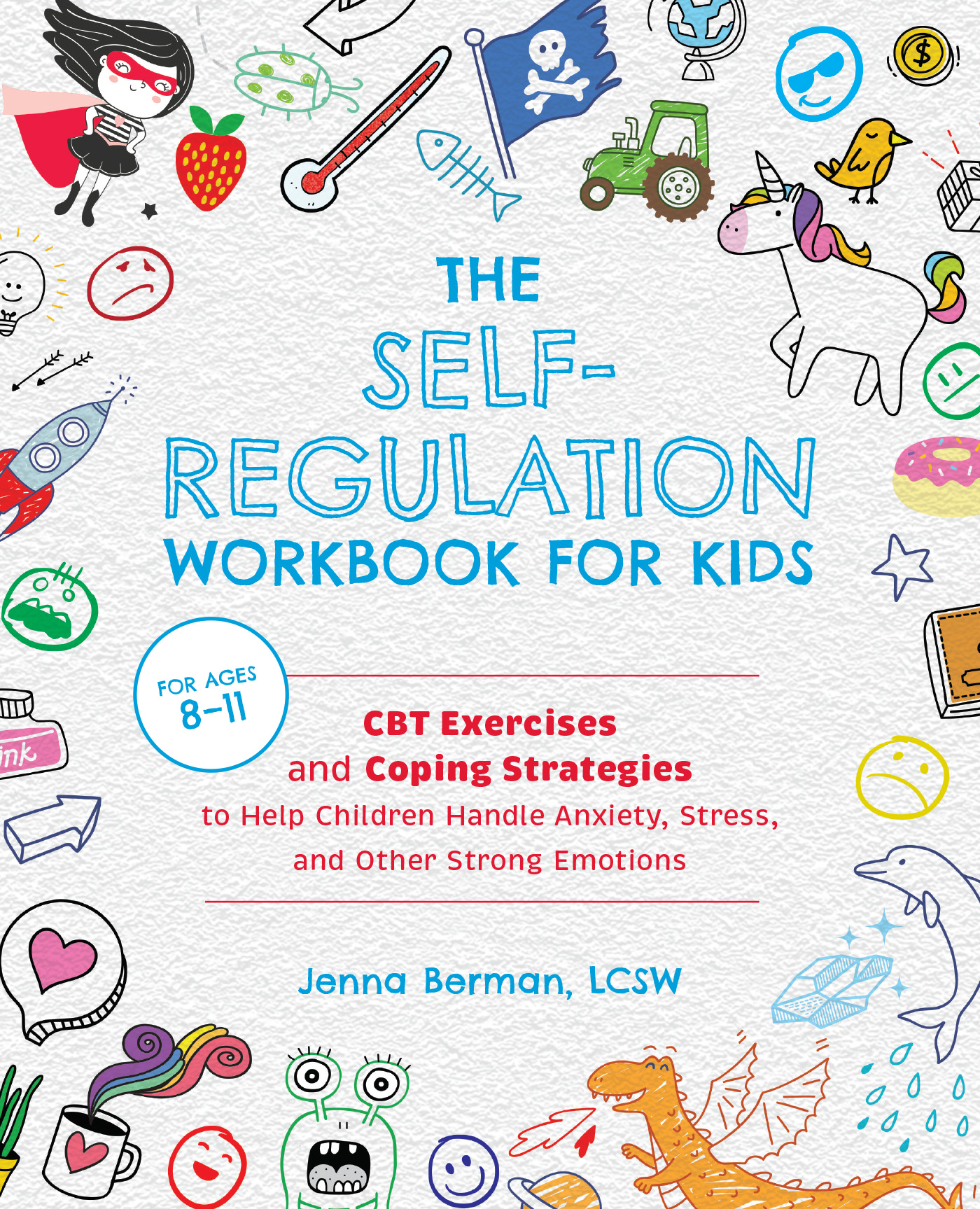Contents
Guide
The Self-Regulation Workbook for Kids
For Ages 811
CBT Exercises and Coping Strategies to Help Children Handle Anxiety, Stress, and Other Strong Emotions
Jenna Berman, LCSW
Text copyright 2021 Jenna Berman. Design and concept copyright 2021 Ulysses Press and its licensors. All rights reserved. Any unauthorized duplication in whole or in part or dissemination of this edition by any means (including but not limited to photocopying, electronic devices, digital versions, and the internet) will be prosecuted to the fullest extent of the law.
Published in the US by:
ULYSSES PRESS
PO Box 3440
Berkeley, CA 94703
www.ulyssespress.com
ISBN: 978-1-64604-183-1
ISBN-13: 978-1-6460-4213-5 (eBook)
Library of Congress Control Number: 2021931486
Acquisitions editor: Casie Vogel
Managing editor: Claire Chun
Project editor: Renee Rutledge
Proofreader: Barbara Schultz
Front cover design: Justin Shirley
Cover artwork: shutterstock.com lineartestpilota; artnLera; Freud; kostolom3000; indratw; Mbukimbuki
Interior design: what!design @whatweb.com
Layout and production: Jake Flaherty
Interior art: shutterstock.com Keigo Yasuda; Nata Lima; drawkman; Jimena Catalina Gayo; Micro One; Ozant; Colorfuel Studio; greenpic studio
NOTE TO READERS: This book is independently authored and published. No endorsement or sponsorship by or affiliation with copyright and trademark holders is claimed or suggested. All references in this book to copyrighted or trademarked products are for the purpose of commentary, criticism, analysis, and literary discussion only.
INTRODUCTION
Teaching children how to identify, understand, and be in control of their thinking, mood, and behavior is crucial to their ability to self-regulate. This book introduces these skills in a child-friendly manner through both story and activities. While this workbook is intended for children ages eight through eleven, the tools and skills, especially those related to identifying and challenging unhelpful thoughts, are valuable for people of all ages and may be advanced for children younger than eight.
When children struggle with self-regulation, it often leads to behaviors that make them feel even worse and create stressful situations for others. While children typically regret such behavior and dont want to repeat it, they likely dont have the skills to be able to react differently when faced with a similar trigger in the future. This workbook helps children to develop the skills to be able to:
- Identify, understand, and express their feelings
- Learn to calm their body
- Identify and challenge unhelpful thoughts
- Identify unhelpful behavior and more adaptive choices they can make instead
- Identify and prepare for situations that may be tricky for them to navigate
These skills are the foundation of cognitive behavioral therapy (CBT), an evidence-based treatment that helps people to improve their functioning when dealing with a wide range of problems. Through CBTwhich has a decades-old canon of nonproprietary clinical terms and techniques that are elaborated upon throughout this bookpeople can learn how to recognize their triggers, become aware of their Automatic Thoughts and responses to them, and learn more adaptive ways of thinking and reacting.
In this workbook, a character named Alex will tell the story of his journey learning and using different tools and techniques to take control of his feelings. There are a number of activities to help your child learn, practice, and internalize the concepts. Read Alexs story aloud with your child and support them in completing the activities. There are side notes for grown-ups throughout the book, which is applicable to teachers, mentors, and clinicians as well as parents and caregivers to support their work with kids. These are not intended to be read with your child. While none of the information provided in these side notes would be harmful for a child to learn, they are directed toward adults and are likely to be confusing and boring for them. Alex is a fictional and hypothetical character. Any resemblance he may bear toward an actual child or children is purely coincidental. All of the lessons provided in the book work for Alex, whereas each and every tool or technique may not be efficacious for your child.
Keep in mind that developing a skill takes time and practice. Be patient and provide your child with the necessary support to be able to use these skills in their everyday environment. This can include verbal reminders, visual reminders, and actually going through the steps of a skill or plan with them.
Spelling, grammar, and penmanship dont count when it comes to exercises to help manage emotions. If these are challenging or triggering for your child, consider allowing them to complete the exercises verbally and then writing their responses. If that is difficult for your child, you can read the text together and make up other ways to process and further explore the content, such as acting it out or telling a story about it with toys. Meet your child where theyre at and adapt the lessons for them. Simply thinking and talking about tricky or unmanageable thoughts, feelings, and behaviors is challenging enough!
It is important for you and your child to further discuss the content of the book and find opportunities to connect it to real-life situations, both while reading and as youre living your lives. Additionally, practice the skills repeatedly to help your child internalize them. This will support your childs ability to access the tools when they are actually faced with intense emotions that are difficult to manage.
Even when a child has made progress, he or she will continue at times to make mistakes and act on their overwhelming emotionsor allow their feelings to get in control. These instances can be opportunities to continue learning and growing. Taking control of feelings is a lifelong process. Even I, a grown-up who helps people manage their emotions for a living, have moments when my feelings get in control and I react in ways that I regret later! This is part of being human. Anticipating this can help make these moments more tolerable. Its stressful for your child when this happens as well. Be sure to instill messages that decrease feelings of shame. When children have difficulty with self-regulation, they often get messages that their behavior is bad, and they develop an underlying belief that they are bad. Help your child understand that even when their behavior is not good at times, they are always a good person who has strengths. Regulating emotions is hard. Its harder for some people than it is for others, and thats okay. You will work together to help your child build the skills to be able to regulate emotions better.
Chapter 1 will help your child to expand their emotions vocabulary, understand that it is normal to experience a wide range of emotions, think about what triggers these emotions and how they affect their functioning, and view emotions as something that they can do something about. Having a larger emotions vocabulary can help a child more accurately identify and understand both their experiences and the experiences of others. This improves a childs ability to manage their emotions and develop healthier relationships. Learning that it is normal to experience a wide range of feelings can help children to feel more comfortable acknowledging and addressing their own emotions and to be more empathetic and tolerant when interacting with others.


